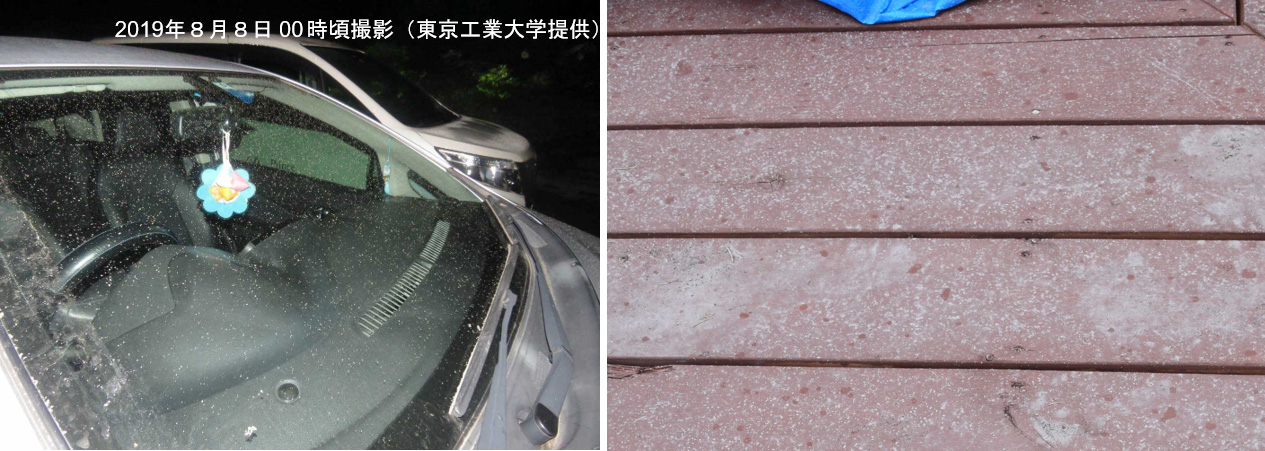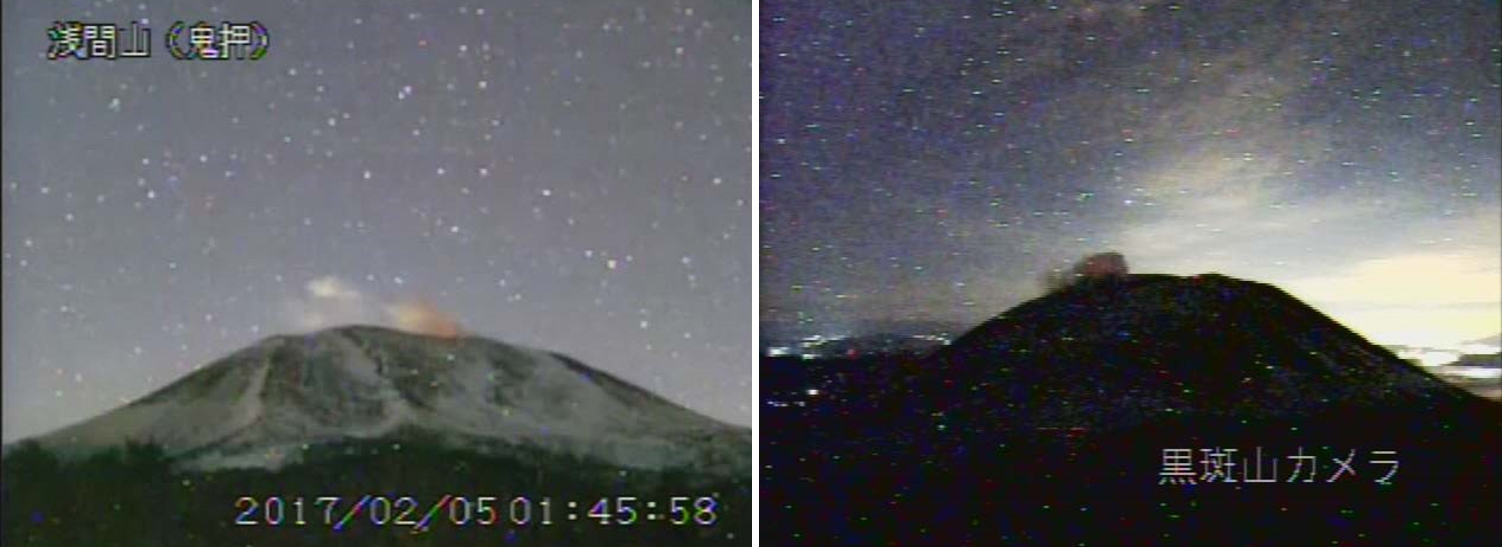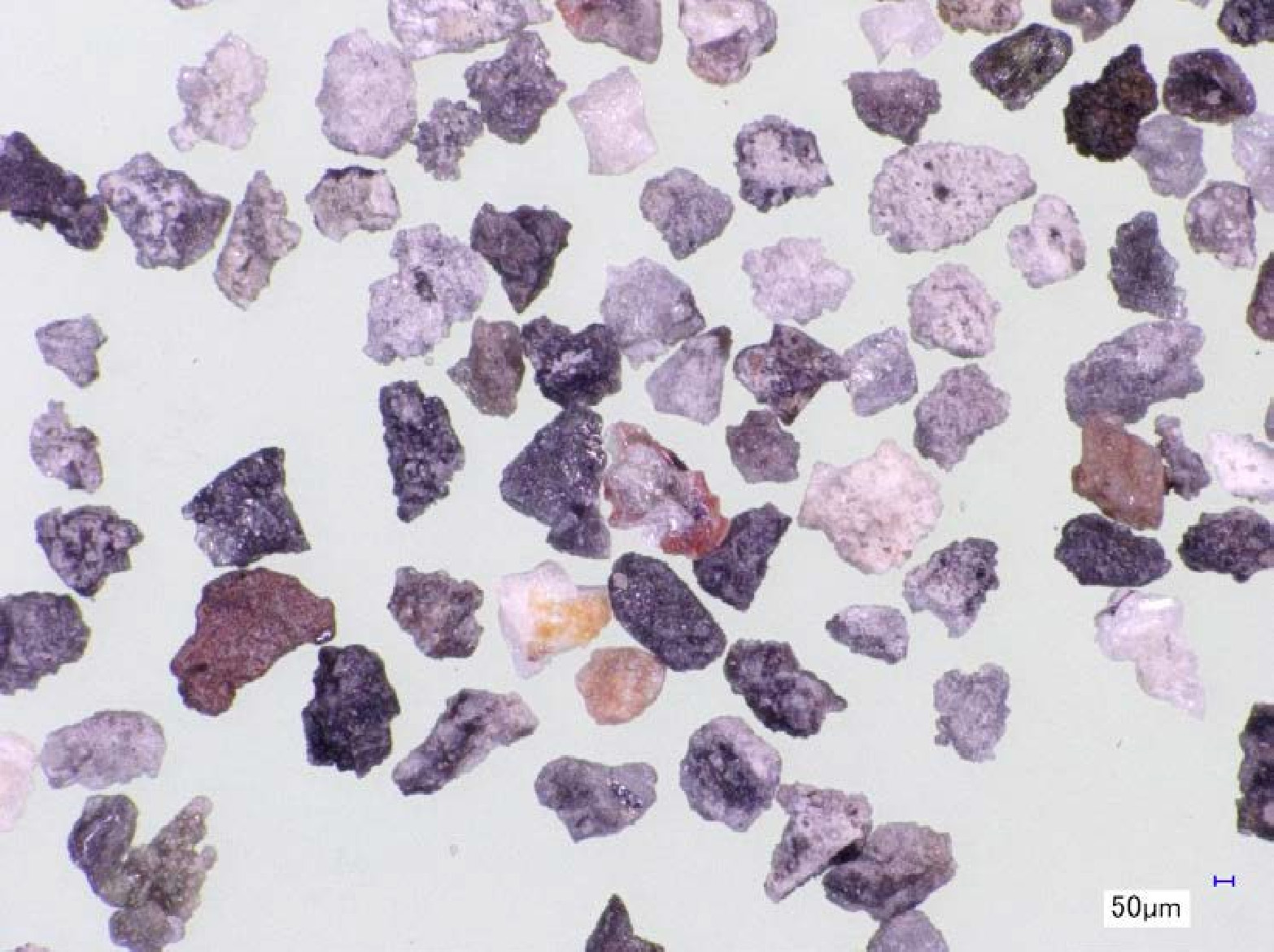Report on Asamayama (Japan) — September 2019
Bulletin of the Global Volcanism Network, vol. 44, no. 9 (September 2019)
Managing Editor: Edward Venzke.
Research and preparation by Kadie Bennis.
Asamayama (Japan) Ashfall from phreatic eruptions on 7 and 25 August 2019
Please cite this report as:
Global Volcanism Program, 2019. Report on Asamayama (Japan) (Venzke, E., ed.). Bulletin of the Global Volcanism Network, 44:9. Smithsonian Institution. https://doi.org/10.5479/si.GVP.BGVN201909-283110
Asamayama
Japan
36.406°N, 138.523°E; summit elev. 2568 m
All times are local (unless otherwise noted)
Asamayama (also known as Asama), located in the Kanto-Chubu Region of Japan, previously erupted in June 2015. Activity included increased volcanic seismicity, small eruptions which occasionally resulted in ashfall, and SO2 gas emissions (BGVN 41:10). This report covers activity through August 2019, which describes small phreatic eruptions, volcanic seismicity, faint incandescence and commonly white gas plumes, and fluctuating SO2 emissions. The primary source of information for this report is provided by the Japan Meteorological Agency (JMA).
Activity during October 2016-May 2019. From October 2016 through December 2017, a high-sensitivity camera captured faint incandescence at night accompanied by white gas plumes rising above the crater to an altitude ranging 100-800 m (figure 44). A thermal anomaly and faint incandescence accompanied by a white plume near the summit was observed at night on 6-7 and 21 January 2017. These thermal anomalies were recorded near the central part of the crater bottom in January, February, and November 2017, and in May 2019. After December 2017 the faint incandescence was not observed, with an exception on 18 July 2018.
Field surveys on 6, 16, and 28 December 2016 reported an increased amount of SO2 gas emissions from November 2016 (100-600 tons/day) to March 2017 (1,300-3,200 tons/day). In April 2017 the SO2 emissions decreased (600-1,500 tons/day). Low-frequency shallow volcanic tremors decreased in December 2016; none were observed in January 2017. From February 2017 through June 2018 volcanic tremors occurred more intermittently. According to the monthly JMA Reports on February 2017 and December 2018 and data from the Geographical Survey Institute's Global Navigation Satellite Systems (GNSS), a slight inflation between the north and south baseline was recorded starting in fall 2016 through December 2018. This growth become stagnant at some of the baselines in October 2017.
Activity during August 2019. On 7 August 2019 a small phreatic eruption occurred at the summit crater and continued for about 20 minutes, resulting in an ash plume that rose to a maximum altitude of 1.8 km, drifting N and an associated earthquake and volcanic tremor (figure 45). According to the Tokyo Volcanic Ash Advisory (VAAC), this plume rose 4.6 km, based on satellite data from HIMAWARI-8. A surveillance camera observed a large volcanic block was ejected roughly 200 m from the crater. According to an ashfall survey conducted by the Mobile Observation Team on 8 August, slight ashfall occurred in the Tsumagoi Village (12 km N) and Naganohara Town (19 km NE), Gunma Prefecture (figure 46 and 47). About 2 g/m2 of ash deposit was measured by the Tokyo Institute of Technology. Immediately after the eruption on 7 August, seismicity, volcanism, and SO2 emissions temporarily increased and then decreased that same day.
 |
Figure 47. Photos of ashfall in a nearby town NNE of Asamayama due to the 7 August 2019 eruption. Courtesy of JMA (Daily Report for 8 August 2019). |
Another eruption at the summit crater on 25 August 2019 was smaller than the one on 7 August. JMA reported the resulting ash plume rose to an altitude of 600 m and drifted E. However, the Tokyo VAAC reported that the altitude of the plume up to 3.4 km, according to satellite data from HIMAWARI-8. A small amount of ashfall occurred in Karuizawa-machi, Nagano (4 km E), according to interview surveys and the Tokyo Institute of Technology.
Geological Summary. Asamayama, Honshu's most active volcano, overlooks the resort town of Karuizawa, 140 km NW of Tokyo. The volcano is located at the junction of the Izu-Marianas and NE Japan volcanic arcs. The modern Maekake cone forms the summit and is situated east of the remnant of an older andesitic volcano, Kurofuyama, which was destroyed by a late-Pleistocene landslide about 20,000 years before present (BP). Growth of a dacitic shield volcano was accompanied by pumiceous pyroclastic flows, the largest of which occurred about 14,000-11,000 BP, and by growth of the Ko-Asamayama lava dome on the east flank. Maekake, capped by the Kamayama pyroclastic cone that forms the present summit, is probably only a few thousand years old and has observed activity dating back at least to the 11th century CE. Maekake has had several major Plinian eruptions, the last two of which occurred in 1108 (Asamayama's largest Holocene eruption) and 1783 CE.
Information Contacts: Japan Meteorological Agency (JMA), 1-3-4 Otemachi, Chiyoda-ku, Tokyo 100-8122, Japan (URL: http://www.jma.go.jp/jma/indexe.html); Tokyo Volcanic Ash Advisory Center (VAAC), 1-3-4 Otemachi, Chiyoda-ku, Tokyo 100-8122, Japan (URL: http://ds.data.jma.go.jp/svd/vaac/data/).




